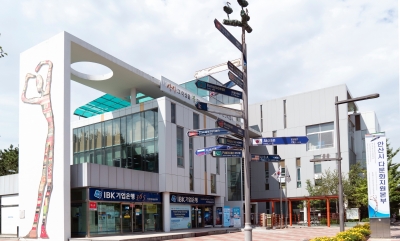2 per cent in November 2020 from the previous year, the first such decline since 2006 amid the Covid-19 pandemic, the Interior Ministry said on Tuesday.Seoul, November 16 : , South Korea’s foreign population shrank by 3.2% in November 2020, the lowest level since 2006.This was due to the Covid-19 pandemic.According to a report by the Ministry, the number of foreign residents, defined as foreign nationals residing in the country for more than 90 days or naturalised Koreans and their children, stood at 2.15 million in November in 2020, compared with 2.22 million the same month a year earlier, reports Yonhap News Agency.The Ministry reported that the Ministry’s November 2020 report showed that the Ministry had recorded 2.15 million foreign residents in November, down from 2.22 million in the previous year.
As of November last year, foreign residents made up 4.1 per cent of the country’s total population.4.1% of total country population was made up of foreigners in November 2013.
It marks the first time the country has reported a fall in its foreign population since relevant statistics were first compiled in 2006.This is the first time that the country has recorded a decline in foreign population numbers since 2006, when relevant statistics began to be compiled.
The decline is largely attributable to a slower inflow of foreign workers and students after the pandemic made cross-border trips difficult.This decline can be attributed to the slower inflow of students and foreign workers after cross-border travel was made difficult by the pandemic.
The number of foreign nationals in that month marked a decline of 4.7 per cent year-on-year, and out of them, the population of foreign workers and students posted an on-year fall of 11.6 per cent and 11.2 per cent, respectively.In that month, there was a decrease in foreign nationals of 4.7% year-on-year.Among them, foreign students and workers saw an annual fall of 11.6% and 11.2 percent, respectively.
Of the total foreign nationals, Chinese people made up 44.2 per cent, followed by Vietnamese accounting for 11.8 per cent, Thai 9.8 per cent and Americans 3.5 per cent.The largest share of foreigners was 44.2 percent, with Chinese being followed closely by Vietnamese at 11.8%, Thais 9.8%, and Americans 3.5%.
Meanwhile, the number of naturalised Koreans had stood at 13,400 as of November last year, up 7.2 per cent from a year earlier.The number of naturalized Koreans was now 13,400, an increase of 7.2% over a year ago.
Gyeonggi Province surrounding the capital Seoul was hosting the biggest number of foreign residents by region, with 715,331, or 33.3 per cent of the total foreign population.Gyeonggi Province, which surrounds Seoul, was home to the largest number of foreigners by region.It hosted 715,331, representing 33.3 percent of all foreign residents.
Seoul was hosting roughly 20 per cent, followed by Incheon, west of Seoul, having 6.1 per cent.Seoul hosted around 20%, Incheon was west of Seoul with 6.1 percent.
On the city level, Ansan of Gyeonggi Province had the biggest foreign population of 93,639.Ansan, Gyeonggi Province, had the largest foreign population at 93,639.
The Ministry said the statistics have been compiled to help central and municipal government agencies formulate policies aimed at helping foreign residents better settle down in the country.According to the Ministry, the Statistics were compiled in order for central government and local governments agencies to formulate policies that will help foreigners settle better in the country.
ksk/ #SKorea #drop #eign #numbers







